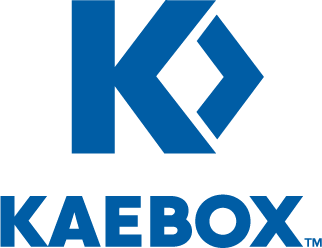Going Green with Kaebox Recycled Plastic Packaging
- Jan 25, 2023
- 3 min read
Updated: Mar 23, 2023
As the world becomes increasingly aware of the negative impact of plastic on the environment, it's more important than ever to take steps to reduce our use of single-use plastics. Kaebox is doing its part by using recycled plastic packaging to help the environment and reduce carbon emissions.
One of the key features of the Kaebox shipping app is the use of recycled plastic packaging. By using recycled plastic, the app helps to reduce the demand for new plastic, which in turn reduces the amount of plastic waste in landfills and the environment. According to the Environmental Protection Agency (EPA), recycling plastic reduces greenhouse gas emissions by over 84 million metric tons annually.
The Kaebox plastic packaging is also designed to be lightweight, which helps to reduce the weight on delivery vehicles and airplanes. This reduces the amount of gas burned, which in turn reduces carbon emissions. According to a study by the Carbon Trust, reducing package weight by just 1% can reduce carbon emissions by up to 6%.
Additionally, the Kaebox shipping app offers live tracking, which allows customers to track the progress of their packages in real-time, eliminating the need for multiple delivery attempts. This can also help to reduce carbon emissions by reducing the number of vehicles on the road.
The Kaebox shipping app is committed to helping the environment by using recycled plastic packaging. By using recycled plastic, the app helps to reduce the demand for new plastic, which in turn reduces the amount of plastic waste in landfills and the environment. The lightweight design of the packaging also helps to reduce the weight on delivery vehicles and airplanes, which in turn reduces carbon emissions. The app's live tracking feature also helps to make the delivery process more efficient and reduce the number of vehicles on the road.
When it comes to packaging materials, plastic bags and cardboard are two of the most commonly used options. However, the environmental impact of these materials is vastly different.
Plastic bags are a major contributor to plastic waste and pollution. According to the EPA, only 9% of plastic bags are recycled in the United States. The rest end up in landfills, oceans, and other bodies of water where they can take hundreds of years to decompose. Plastic bags also pose a significant threat to marine life, as they can be mistaken for food and ingested.
On the other hand, cardboard is a more environmentally-friendly option as it is made from a renewable resource (trees) and is biodegradable. However, it still has a carbon footprint due to the energy and resources used to produce and transport it. Additionally, it also has to be transported from the manufacturer to the end user, which also contributes to carbon emissions.
The Kaebox recycled plastic packaging offers an alternative to traditional plastic bags and cardboard. The use of recycled plastic reduces the demand for new plastic, which in turn reduces the amount of plastic waste in landfills and the environment. Kaebox plastic packaging is also lightweight, which helps to reduce the weight on delivery vehicles and airplanes, which in turn reduces carbon emissions.
Furthermore, according to a study by the Carbon Trust, recycling plastic reduces greenhouse gas emissions by over 84 million metric tons annually, in addition to the reduction of carbon emissions by reducing the weight of the package.
In conclusion, while cardboard may be a more environmentally-friendly option than traditional plastic bags, the Kaebox recycled plastic packaging offers an even more sustainable choice. By using recycled plastic, it reduces the demand for new plastic and helps to reduce the amount of plastic waste in landfills and the environment. Additionally, the lightweight design of the packaging also helps to reduce the weight on delivery vehicles and airplanes, which in turn reduces carbon emissions.




Comments